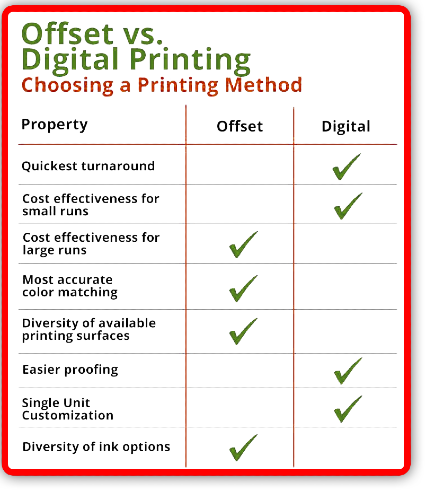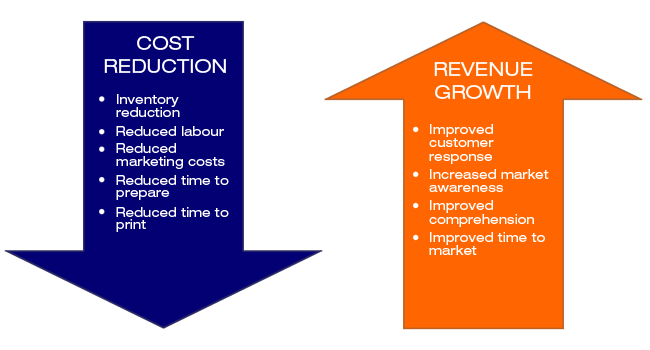The Buzz on Digital Printing
The Buzz on Digital Printing
Blog Article
Not known Facts About Digital Printing
Table of Contents6 Easy Facts About Digital Printing DescribedLittle Known Questions About Digital Printing.6 Easy Facts About Digital Printing DescribedWhat Does Digital Printing Mean?Digital Printing for Beginners
Digital printing is quicker and with the ability of even more information, two reasons it's typically used to publish product packaging, direct advertising flyers, and books or publications. A lot of digital printing presses have historically made use of toner-based modern technology and as that innovation promptly advanced, the print high quality equaled that of offset presses. Recently, inkjet innovation has actually simplified electronic print availability along with the cost, rate and quality obstacles encountering print companies today.
The precise color matching and adaptability it uses make it tough to disregard. Digital printing permits fast and economical production without jeopardizing top quality, unlike offset printing. It makes it possible for smaller print runs and on-demand production, making it perfect for companies of all sizes. Electronic printing, with its excellent shade accuracy and uniformity, is a game-changer in the industry.
Some Known Incorrect Statements About Digital Printing
While both have their merits, there are numerous vital distinctions that set them apart. Comprehending these differences can help you make an informed choice about which method is ideal fit for your printing needs. Offset printing has long been the best option for high-volume industrial printing. It involves moving ink from plates to rubber coverings before ultimately using it onto the paper.
One significant advantage of offset printing machine is their ability to manage a variety of paper dimensions and thicknesses. The countered press can suit different products, including shiny or distinctive papers, providing convenience that digital printers might battle to match. This printing technique depends on using printing plates to move the ink onto the paper, making it a popular choice for top quality prints.
The process includes producing plates for each shade used in the style, which can be taxing and costly upfront. Changes may be required throughout the print go to keep high quality uniformity with printing presses. Digital printing, on the other hand, uses an extra streamlined method contrasted to counter press. With this method, ink is used straight onto the paper without the need for intermediate steps like plate development or rubber coverings.
This fast arrangement time makes electronic printing highly effective for fine print runs or limited due dates where time is important. Whether you require a handful of leaflets or customized to specific receivers, electronic printing provides a. Unlike offset printing that requires large print runs to be economical because of configuration expenses included with producing plates and changing colors manually if required throughout manufacturing; electronic printing stands out at both little and big quantities without jeopardizing high quality or costing a fortune.
What Does Digital Printing Do?
One significant advantage of digital printing is the elimination of pricey setup costs that are associated with countered printing. In standard balanced out printing, each job calls for the development of plates, which can be pricey and lengthy.
Another cost-saving facet of digital printing is the capability to print just what you require - Digital Printing. Unlike countered printing, where big amounts need to be created to make the procedure financially sensible, electronic printers offer higher versatility. Whether you call for a tiny set or a solitary copy, electronic innovation enables on-demand printing with Click Here no additional costs
Using conventional countered printing would need creating a huge quantity upfront to attain an acceptable system expense per flyer. Nevertheless, by choosing digital printing rather, they can publish only the precise number needed at a reduced overall cost.: A marketing company intends to run a straight mail campaign targeting different consumer sectors with personalized brochures.
A Biased View of Digital Printing
Among the key benefits of digital printing for fine print runs is its. Unlike balanced out printing, which requires the development of plates and configuration time for each and every task, electronic printers can begin generating prints virtually quickly. This makes them ideal for smaller quantities where time is of the essence.
One more advantage of digital printing is its his response capability to produce individualized advertising materials. With, organizations can conveniently integrate personalized content within each printed item - Digital Printing.

One of the key advantages is the enhanced flexibility and customization choices that feature digital printing. With electronic printing, making adjustments to designs or content throughout the production procedure is a wind (Digital Printing). Unlike standard countered printing, where making modifications can be taxing and expensive, digital innovation enables fast and very easy adjustments
Rumored Buzz on Digital Printing
One more advantage of electronic printing is its variable data capacities. Whether you need to customize each item with individual names, addresses, or other click now special info, variable data printing makes it possible.

Report this page